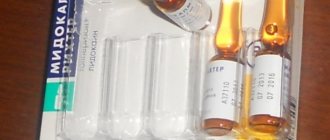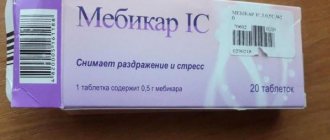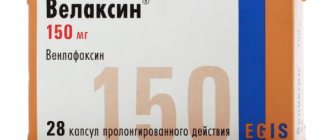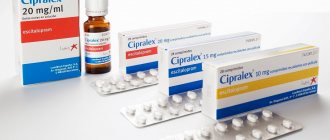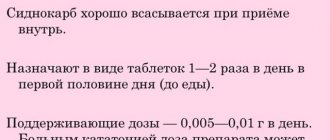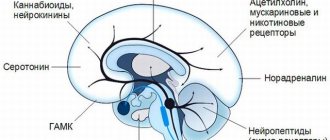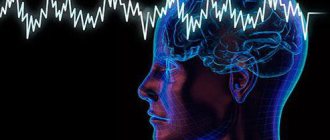Anafranil is an antidepressant with antihistamine, anticholinergic and antiserotonergic properties.
Prescribed for psychomotor retardation, anxiety, depressed mood and other typical manifestations of depressive syndrome. Has a specific effect in obsessive-compulsive disorders.
On this page you will find all the information about Anafranil: complete instructions for use for this drug, average prices in pharmacies, complete and incomplete analogues of the drug, as well as reviews of people who have already used Anafranil. Would you like to leave your opinion? Please write in the comments.
Release form and composition
The drug is released in this form:
- Anafranil 25 mg, tablets No. 10, 30. Light yellow, biconvex, round.
- Anafranil 75 mg, tablets. Pink, capsule-shaped, biconvex, with an engraved stripe on both sides, “C/G” on one side, “G/D” on the other. Sold in blisters, in a cardboard box. Each blister contains 10 pieces.
- Solution for IM or IV administration 25 mg, ampoules. Colorless, transparent. Sold in cardboard packs of 10 pieces.
Prices and analogues
Analogues of Anafranil are the drugs Clomipramine, Clofranil, Clominal. The price of a package of Anafranil in 25 mg tablets varies from 297 rubles.
Pharmacological effect
The active component of Anafranil is clomipramine, an antidepressant with a pronounced sedative and moderate analgesic effect. According to some reviews, Anafranil is distinguished by its ability to relieve depression, anxiety, and have a disinhibiting effect.
The drug helps with eating disorders such as bulimia, which may be accompanied by depression. Manifestations of a depressed state of the nervous system begin to subside a week after the start of treatment. It is undesirable to prescribe Anafranil to patients with narcoleptic drowsiness: in this case, the medicine is ineffective.
Composition of the drug
The main active ingredient of the drug is clomipramine. It controls chemical reactions in the body and prevents the improper absorption of essential substances. The composition of the drug in tablet form includes clomipramine hydrochloride and excipients:
How to Simply Recommend
Why the medicine does not work The key to successful treatment is, of course, following all the doctor’s recommendations and informing him of all significant changes during therapy. However, a specialist can talk as much as he wants about the regimen and duration of taking the drug, but most patients will still violate these rules. Read more
- microcrystalline cellulose;
- crystalline sucrose;
- corn starch.
The mechanism of action of the drug is provided by specific additives:
- glycerol 85%:
- polyethylene glycol;
- hydroxypropyl methylcellulose;
- vinylpyrrolidone/vinyl acetate copolymer;
- titanium dioxide;
- polyvinylpyrrolidone K30, dispersed yellow 15093 ansted.
The special chemical composition of the medicine ensures its effectiveness. The effect is observed after 15-20 days. Pathological anxiety gradually goes away, the slowdown in reactions and depression in the general condition recede. It is also common to use the drug for obsessive-compulsive disorders, where the effect of the drug is specific, different from the usual antidepressant effect.
Indications for use
The use of Anafranil in adults is required for:
- Chronic pain syndromes;
- Phobias and panic attacks;
- Depressive states of various origins;
- Obsessive-compulsive syndromes;
- Dissociative disorders;
- Cataplexy accompanying narcolepsy.
Anafranil is indicated for children and adolescents for:
- Obsessive-compulsive syndromes;
- Nocturnal enuresis.
Treatment of nocturnal enuresis is carried out only in children over 5 years of age. Organic causes of the disease must first be excluded and the relationship between potential benefit and risk for the child must be established.
Currently, the safety and effectiveness of Anafranil in children and adolescents in the treatment of depressive conditions, phobias, panic attacks and chronic pain syndrome have not been sufficiently studied. Therefore, for such indications, the drug is not recommended for use in patients under 17 years of age.
Directions for use and dosage
The dosage of Anafranil is selected individually, depending on the patient’s condition. The main goal of treatment is to achieve an optimal therapeutic effect using the smallest possible dosages of medication.
Before starting to use Anafranil, hypokalemia, if any, should be eliminated.
For obsessive-compulsive syndrome, depression, and phobias, Anafranil is prescribed at a dose of 25 mg three times a day or 75 mg once a day. Every few days the dose of the drug is increased by 25 mg until the optimal dose is reached, which is 100-150 mg per day.
In severe cases, the dosage may be increased to 250 mg. After achieving the required therapeutic effect, the patient is transferred to a maintenance dose of 50-100 mg per day.
For agoraphobia and panic disorder, the dose of Anafranil at the initial stage is 10 mg per day with a gradual increase, depending on the patient’s tolerance, to 25-100 mg. The recommended duration of therapy is six months.
For cataplexy accompanying narcolepsy, the dosage of Anafranil is 25-75 mg per day.
For chronic pain syndrome, the dosage of the drug depends on the severity of the symptoms and varies between 10-150 mg per day.
For elderly patients, Anafranil is prescribed at an initial dose of 10 mg per day with a gradual increase over 10 days to 30-50 mg.
Contraindications
The drug is not prescribed:
- pregnant and lactating women;
- when taking MAO inhibitors (two weeks before and after), reversible MAO-A inhibitors;
- if you are allergic to tricyclic antidepressants, dibenzazepine or clomipramine groups;
- if you have recently had a myocardial infarction;
- children under 5 years old;
- with long QT interval syndrome.
Please be careful:
- persons with cardiovascular insufficiency or arrhythmia;
- with glaucoma or urinary retention;
- people who have a tendency to experience constipation, especially for bedridden or elderly people;
- with serious liver disease or hyperthyroidism;
- To old people;
- teenagers;
- for brain injuries;
- for epilepsy;
- when combining the drug with antipsychotics;
- with a tumor of the adrenal medulla;
- with neuroblastoma or pheochromocytoma.
When using the medicine, you should constantly monitor your blood pressure and monitor your intraocular pressure.
If the patient uses contact lenses, it must be remembered that the drug can reduce the intensity of tear production. This may damage the cornea.
Particular care should be taken when administering the drug intravenously to avoid anaphylactic shock.
Strongly not recommended
The main contraindications to taking Anafranil are the period of gestation and lactation, early childhood. Use is prohibited in case of individual intolerance to one or more components included in the drug, especially if it is intolerance to tricyclic antidepressants. It is prescribed extremely selectively with the concurrent use of medications (selective MAO inhibitors).
Use is not recommended after acute myocardial injury. After the age of 60, contraindications may include disruption of cardiac systole, insufficient functioning of the heart and blood vessels, diabetes mellitus, chronic constipation, in which an antidepressant can cause paralytic intestinal failure, characteristic of disabled and immobile patients. It is imperative to take special care in case of any diseases of the cardiovascular system.
Taking Anafranil is an absolute obstacle to driving a car and manipulating precision mechanical devices. It is not recommended to engage in work that requires a high degree of concentration, good vision and precision of movements.
Use during pregnancy and lactation
Experience with the use of Anafranil during pregnancy is limited. Since there are isolated reports of a possible connection between the use of tricyclic antidepressants and fetal developmental disorders, the use of Anafranil during pregnancy should be avoided, unless the expected effect of treatment on the mother clearly outweighs the potential risk to the fetus.
In cases where tricyclic antidepressants were used during pregnancy until delivery, the neonate developed a withdrawal syndrome within the first few hours or days, manifested by shortness of breath, drowsiness, colic, irritability, hypotension or hypertension, tremor, cramping, or convulsions. To avoid the development of this syndrome, Anafranil should be gradually withdrawn, if possible, at least 7 weeks before the expected birth.
Since the active substance of the drug is excreted in breast milk, you should either stop breastfeeding or gradually discontinue Anafranil.
Analogs
The drug has a sufficient number of analogues for the active substance. Such drugs can act as drug substitutes. Medicines are tolerated identically; during the use of medicinal formulations, adverse reactions can be observed. In some cases, dosage adjustments are required when changing the drug composition, so you should consult a doctor to determine the exact regimen of therapeutic intervention.
Gidifen
The drug is prescribed to patients to ensure correction of the central nervous system. The product helps eliminate panic attacks. The drug can be used to relieve pain. The drug has a sufficient number of contraindications for use. The manufacturer does not recommend using the composition in pediatric practice. The active substance of the drug rapidly penetrates the systemic bloodstream and can provoke the manifestation of various developmental pathologies in the fetus.
Clomipramine
The drug can be used as an effective substitute for the drug Anafralin. The drug is well tolerated by patients; adverse reactions during use are quite rare. It is important to monitor the process of using the medication in the first days of use. If any reactions occur, you should seek the help of a specialist. The drug is prohibited for use in pediatric practice; no tests of the effectiveness and safety of the use process have been conducted.
Clofranil
The drug Clofranil is also used to correct the functioning of the central nervous system and can be used to eliminate various disorders. The drug is produced in the form of tablets for oral use. Dosages and duration of use should be determined by the attending physician on an individual basis.
Instructions for use Anafranil
The instructions for use indicate that Anafranil tablets are taken with or after food. This will prevent irritation of the mucous membrane. The solution is administered intravenously or intramuscularly. Therapy is carried out in minimally effective dosages.
| Condition, indication | Release form, dosage | Dosage regimen (once daily), first week of therapy and maintenance therapy | Therapy from the second week until the effect is achieved |
| Depressions of various origins | – Anafranil 25 tablet – Anafranil SR tablet | 2-3 times 1 time (in the evening) | 4 times/day 2 times/day |
| Phobias | – Anafranil 25 tablet – Anafranil SR tablet | 2-3 times 1 time | 4 times/day 2 times/day |
| Obsessive-compulsive syndromes | – Anafranil 25 tablet – Anafranil CP tablet | 2-3 times 1 time (in the evening) | 4 times/day 2 times/day |
| Narcolepsy with catalepsy | – Anafranil 25 mg/2ml | 1-3 ampoules/day | 1-3 ampoules/day |
| Chronic pain syndrome | – Anafranil 25 tablet – Anafranil CP tablet – Anafranil 25 mg/2ml | 0.5-6 tab. /day 1-2 tablets/day 0.5-6 ampoules/day | 0.5-6 tablets/day 1-2 tablets/day 0.5-6 ampoules/day |
| Attacks of fear | – tablet Anafranil 25 | 0.5 tablets/day | 0.5 tablets/day or increase to another minimum effective dosage |
| Indications for the elderly | – tablet Anafranil 25 | 0.5 tablets/day | 1-2 tablets/day |
| When indicated in children 5-7 years old | – tablet Anafranil 25 | Up to 1 tablet/day | Up to 1 tablet/day |
| When indicated in children 8-14 years old | – tablet Anafranil 25 | 0.5-2 tablets/day | 0.5-2 tablets/day |
In elderly patients, the initial dose is 10 mg/day. Then gradually, over about 10 days, the daily dose of the drug is increased to the optimal level, which is 30-50 mg.
Anafranil price
The cost of the drug depends on the type of release, packaging volume and trade markup. In Moscow, approximate prices for the medicine will be:
| Type of release, packaging volume, concentration of active ingredient | Internet cost, rubles | Pharmacy price tag, rubles |
| Tablets 25 mg 30 pcs. | 297 | 315 |
| Solution 2 ml 10 ampoules | 640 | 680 |
| CP tablets 75 mg 20 pcs. | 790 | 850 |
| CP tablets 75 mg 10 pcs. | 430 | 455 |
Side effects
The use of Anafranil may cause the following side effects:
- Hematopoietic system: agranulocytosis, leukopenia, thrombocytopenia, eosinophilia, purpura;
- Hypersensitivity reactions: systemic anaphylactoid reactions, allergic alveolitis with or without eosinophilia;
- Sense organs: tinnitus, disturbance of taste;
- Cardiovascular system: palpitations, sinus tachycardia, orthostatic hypotension, increased blood pressure, arrhythmias, minor changes in the ECG, intracardiac conduction disorders;
- Digestive system: nausea, vomiting, diarrhea, abdominal discomfort, anorexia, hepatitis, increased levels of liver enzymes;
- Skin reactions: skin allergies (photosensitivity, urticaria, rash, itching), swelling, alopecia;
- Endocrine system: impaired potency and libido, weight gain, swelling of the mammary glands, galactorrhea, syndrome of inadequate response of antidiuretic hormone;
- Central and peripheral nervous systems: feeling of fatigue, drowsiness, increased appetite, anxiety, disorientation, confusion, hallucinations, agitation, anxiety, depersonalization, manic state, tremor, headache, delirium, paresthesia, increased muscle tone, ataxia, convulsions.
Antidepressant Velaxin
The drug contains the active substance venlafactin. The drug is released in the form of tablets and capsules. Additional components of the tablets are: lactulose monohydrate, magnesium stearate, anhydrous colloidal silicon dioxide, MCC, type glyconate, sodium starch A.
The capsules contain the following ingredients: microcrystalline cellulose, dimethicone, ethylcellulose, copovidone, sodium chloride, talc, xanthine gum, potassium chloride, anhydrous colloidal silica, yellow iron oxide.
The capsule shell consists of red and yellow iron oxide, gelatin and titanium dioxide.
White, round, flat tablets with a chamfer and engraving (E741), packed in blisters and cardboard boxes (packs). The capsules are gelatinous, hard, with an orange-brown lid and a colorless transparent base. Regardless of the release form, the drug has the same medicinal light odor. According to its pharmacological action, it is an antidepressant.
Pharmacokinetics and pharmacodynamics
According to its chemical parameters, Velaxin does not belong to the known classes of antidepressants (for example, tetracyclic, tricyclic, etc.).
Experts explain the principle of its action by saying that this medication is capable of potentiating transmitted nerve impulses in the central nervous system. Its action is aimed at enhancing the neurotransmitter activity occurring in the nervous system.
This is a so-called norepinephrine and serotonin reuptake inhibitor and is very powerful.
The metabolite of venfalaxin and venfalaxin, among other things, are involved in blocking the reuptake of dopamine very weakly, but when exposed to the reuptake of neurotransmitters, they are equally effective; capable of suppressing beta-adrenergic reactions.
In terms of the degree of absorption, the activity of the component is high (the percentage is 92% after the first dose); bioavailability is 45%.
After taking the drug, the concentration of the substance and the presence of its metabolite in the blood plasma is observed after 6-8 hours.
The half-life of the drug is 15 hours . The active substance and its metabolites are excreted through the kidneys; The insoluble fraction of microspheres when taking capsules is excreted along with feces. In case of hepatic and (or) renal failure, the elimination time increases.
Velaxin: indications for use
- The drug is used for depressive conditions of any origin, generalized and social anxiety disorders.
- Contraindications.
- The medicine is contraindicated for use in the following cases:
- with impaired liver and kidney function;
- during pregnancy and lactation;
- in case of hypersensitivity to the components of the drug;
- patients under 18 years of age.
Prescribed with caution in cases of arterial hypertension, recent myocardial infarction, history of convulsions, closed-angle glaucoma, predisposition to bleeding of the mucous membranes and skin, unstable tachycardia and angina pectoris, increased intraocular pressure, low weight of the patient, manic states.
Side effects of the drug
Side effects of Velaxin include conditions that can be caused by dosage. With longer treatment, the frequency and severity of side effects decreases significantly, so there is no need to refuse treatment.
Possible side effects:
- weakness;
- fatigue;
- headache;
- chills;
- abdominal pain;
- increased body temperature;
- anxiety, drowsiness or insomnia, unusual dreams, dizziness,. paresthesia, apathy, hallucinations, myoclonus, confused thoughts.
- visual and taste disturbances, tinnitus, increased sensitivity to light
- itching, skin rash (urticaria, Quincke's edema), sweating;
- increased cholesterol levels in the blood serum, weight loss, hyponatremia, disturbances in laboratory tests of liver function, hyponatremia, insufficient ADH section syndrome.
- dulled feeling of hunger, constipation, nausea, dry mouth, vomiting, increased activity of liver enzymes; bruxism;
- fainting, arterial hypertension, dilation of blood vessels, rapid heartbeat, tachycardia, orthostatic hypotension;
- hemorrhages in the mucous membranes and skin;
- problems with ejaculation, erectile dysfunction, anorgasmia, decreased libido, menstrual irregularities, urinary retention;
- muscle spasm, myalgia, arthralgia.
Rare cases of side effects:
- bleeding in the gastrointestinal tract, hypomania, ataxia, pancreatitis, mania, speech impairment;
- manifestations reminiscent of neuroleptic malignant and serotonergic syndromes, delirium, anxiety or psychomotor agitation, extrapyramidal disorders;
- tardive dyskinesia, thrombocytopenia, arrhythmia, prolongation of the QT interval, ventricular fibrillation, a feeling of prolongation of time;
- bleeding, neutropenia, agranulocytosis, aplastic anemia, alopecia, pancytopenia, Stephen-Jones syndrome, galactorrhea, erythema multiforme, hepatitis, rhabdomyolysis, increased prolactin levels.
In case of abrupt cessation of treatment with the drug or reduction of dosage, the following are possible:
- headache, dry mouth, nausea, vomiting, sweating, diarrhea;
- increased anxiety, drowsiness, disorientation, dizziness, paresthesia;
- anorexia, hypomania.
If side effects occur, the dosage of the drug should be reduced gradually. The period of dose reduction largely depends on such features as the dosage size, duration of treatment, and disease.
Method of administration and dose of the drug
Velaxin tablets. Instructions for dosage and use .
For depression, experts recommend Velaxin 75 mg.
If it is necessary to take an antidepressant with a higher dosage, it is recommended to start treatment with 150 mg (Velaxin 150 mg). The daily dosage in this case is increased by 37.5−75 mg, its interval should be no more than 14 days.
When the desired effect is obtained from the medicine, the dose of the drug must be gradually reduced , since the higher the dosage, the greater the likelihood of side effects.
Severe cases of depression are treated with this drug for more than six months. Prevention and maintenance treatment last for at least 6 months. In this case, the minimum dosage drug is recommended, Velaxin 75 mg.
Velaxin 75 mg is prescribed for social and generalized anxiety disorders. After 14 days of treatment with the drug, the patient’s condition noticeably improves. If the result is not achieved, it is recommended to increase the dosage to 150 mg.
Velaxin capsules, instructions.
Some cases require adjustment of the dosage of the drug . In case of mild renal failure, the dose should not be adjusted, but in case of moderate degree of this disease, it is necessary to reduce the dose by 25-50%. In case of severe renal failure, taking the drug is not recommended at all.
Elderly patients should use the drug with caution, as renal dysfunction is possible (Velaxin 75 mg is recommended). If the dose is increased, the patient should be under medical supervision.
Abruptly stopping the drug may cause side effects , especially if the dosage is increased, so it is recommended to reduce the dose gradually before stopping treatment. If the high dose of the drug is taken for more than 6 weeks, the dosage must be reduced for at least 2 weeks.
Treatment of a supportive nature depends on the duration of therapy, dose and sensitivity of the patient to this drug.
Consequences of overdose
Overdose may occur in the following cases:
- when the ECG changes;
- possible hypotension, bradycardia, ventricular and sinus tachycardia;
- when there is a change in consciousness;
- there are cases of deaths.
This therapy is symptomatic. There is no special antidote. It is recommended to maintain control and vital functions of the body.
Interaction with other drugs
The use of an antidepressant that causes a combination of the drug with MAO inhibitors . If they are used, Velaxin must be prescribed after completion of taking medications contraindicated to the combination after 2 weeks. Also, a week after completion of treatment, Velaxin can prescribe MAO inhibitors. When taking reversible MAO inhibitors, the time of taking Velaxin can be reduced by at least a day.
- In case of simultaneous use of the drug with lithium, its concentration may increase.
- The combination of Velaxin with Imipramine will lead to an enhanced effect of its main metabolites: 2-OH-imipramine and desipramine.
- The interaction of the drug with Haloperidol causes an increase in its content in the blood and also enhances its effect.
- When the drug is combined with Clozapil, its plasma content increases; negative side reactions appear.
Drinking alcohol while taking Velaxin is strictly not recommended . When an antidepressant interacts with alcohol-containing drinks and (or) psychotropic drugs of a different nature, cases of death have been reported.
- Velaxin should be prescribed with caution when it contains inhibitory enzymes CYP3A4 and CYP2D6.
- When the drug is combined with Warfarin, an increase in its anticoagulant effect is observed.
- Shelf life and storage conditions.
Overdose
Manifestations of an overdose of Anafranil gain momentum 4 hours after excessive use. These include:
- drowsiness, insomnia, confusion, anxiety;
- muscle rigidity, ataxia, stupor;
- seizures of an epileptic nature;
- failures of intracardiac conduction, rapid rhythm.
Signs of poisoning last for four to six days. According to a number of reviews about Anafranil, a large dosage can cause vomiting, lack of urine formation, and severe sweating. Sometimes there is dilation of the pupils, shortness of breath, and depression of the respiratory process.
Therapy for an overdose of Anafranil is performed in several ways:
- if Anafranil was taken in tablets, then the patient should rinse the stomach, then prescribe activated charcoal;
- in case of severe poisoning with Anafranil: artificial ventilation, cholinesterase inhibitors, anticonvulsant measures. Methods such as diuresis and hemodialysis have been found to be ineffective.
How to eliminate the symptoms of overdose?
A cure for overdose with this drug has not been developed, so therapy is carried out aimed at eliminating symptoms and supporting the body as a whole. The initial measure is gastric lavage, provided that the patient is conscious. If not, then tracheal intubation is performed to avoid aspiration. In this case, vomiting cannot be caused, as the person may choke. These measures must be taken even after 12 hours from the onset of symptoms of intoxication. Activated carbon can help slow down the absorption process of the active substance.
Therapy requires constant monitoring of heart function, electrolyte levels and blood gas composition. The most modern intensive care methods are used. Sometimes emergency measures such as resuscitation or anticonvulsant treatment are given. This is confirmed by people's reviews about Anafranil. You should feel better after it, not worse.
special instructions
- Caution should be exercised if the patient is predisposed to constipation.
- Taking antidepressants increases the likelihood of suicidal thoughts and suicide attempts. Family members and those around the patient (guardians) should remember this. Also, if such tendencies have not previously been observed in the patient, then the drug should be discontinued.
- During treatment, the level of leukocytes may change; therefore, blood counts need to be monitored.
- In persons predisposed to psychosis and the elderly, the drug can cause nocturnal delirious psychosis. After stopping taking the drug, these side effects go away.
- Patients with panic attacks may experience a deterioration in their condition in the first days of treatment; as a rule, they feel better after a week.
- The drug should be combined with electroconvulsive therapy only if the patient’s well-being is carefully monitored.
When writing a prescription, you should indicate the minimum number of tablets required at the moment, in order to avoid accidental overdose of the drug.
Use in old age
Anafranil should be used with extreme caution in patients with cardiovascular diseases, mainly arrhythmias, intracardiac conduction disorders (for example, AV block I–III degrees) or cardiovascular failure. In such patients, as well as in elderly patients, regular ECG and monitoring of heart function is recommended.
When taking Anafranil to patients suffering from chronic constipation, special caution is required. It can cause paralytic ileus in both bed rest and elderly patients.
Drug interactions
You need to remember that:
- If it is necessary to prescribe Fluoxetine, at least 2-3 weeks should pass between taking this drug and Anafranil.
- It is advisable not to take diuretics during the course.
- Anafranil can enhance the effect of anticholinergics on the central nervous system, eyes, bladder, intestines (atropine, biperidine, antihistamines, antiparkinsonian drugs).
- Do not co-administer or immediately after discontinuation of MAO inhibitor drugs.
- Anafranil inhibits the action of batanidine, guanethidine, resirpine, alphamethyldopa, clonidine.
- Before anesthesia, you should warn the specialist about treatment with the drug.
- Do not take with drugs that prolong the QT interval.
- Do not use with other drugs that inhibit the action of Anafranil (recapture serotonin and norepinephrine).
- The drug can enhance the effect of sympathomimetic drugs on the cardiovascular system (adrenaline, norepinephrine, ephedrine, phenylerine).
The drug may enhance the effects of alcohol and other central nervous system depressants.
Pharmacodynamics and pharmacokinetics
Anafranil is a tricyclic antidepressant . Its main action is to inhibit the reuptake of norepinephrine and serotonin . This process is carried out by changing the concentration of monoamines in the central nervous system and blocking n2-histamine receptors.
Clomipramine eliminates psychomotor retardation, anxiety, and bad mood. The active substance can eliminate nocturnal enuresis , which is not determined by physiological disorders, and reduces appetite. serotonin and adrenaline is being established . The therapeutic effect will be noticeable after the first week of taking the drug, reaching its effective maximum after 2-3 weeks.
When intramuscularly, the drug is well and completely absorbed. 97% of the product binds to blood plasma proteins.
The drug reaches its equilibrium maximum concentration after 2 weeks of systematic use. About 2% of the substance is found in the cerebrospinal fluid. The drug penetrates well into breast milk.
The drug is metabolized by demethylation , with the participation of the enzymes CYP3A4, CYP2C19, and CYP1A2 , the resulting metabolites are active. The period of elimination of the drug from the body is from 18 to 25 hours, depending on the method of administration.
Metabolites are excreted in urine and feces.
In elderly patients, plasma concentrations of the drug may vary significantly due to slow metabolism.
People's reviews about the drug Anafranil
We have made a selection of reviews in which people tell how they felt after taking Anafranil:
- Hi all! I don’t know if my experience will be useful, but I’ll share. I have been taking this drug my whole life – 25 years. 1/4 for the night. It wasn't bad. But the orgasm disappeared completely, that was the problem. Although depression is an even bigger problem. After 10 years I gave it up, there was no withdrawal syndrome, but after 1 year 3 months I abruptly stopped walking, moved around holding onto the walls, my head was a mess instead of brains, it was unclear where the floor was, where the ceiling was, my facial features were greatly distorted. He was urgently appointed again. And everything passed immediately. So, apparently, the drug is not just bad - it’s terrible. Now I'm sweating so much that I can't leave the house. Thankfully I'm retired. Almost all the side effects are mine, and these are entire diseases. No life. And I’m afraid to leave him again - I don’t want a repetition of the situation when you stop being a normal living being altogether. I don't know what to do...
- He pulled me halfway from the other world and these are not empty words. At the age of 30, fate gave me a gift in the form of OCD. Over the course of 6 months, OCD drove me into severe depression with all the severe consequences (insomnia - I couldn’t close my eyes for about 8 days and this is not an exaggeration, I realized that this was possible, then against this background I had thoughts of suicide). In general, I gave up and went to a good doctor who prescribed me Truxal and Anafranil, after 1.5 months my sleep was restored and I’ve been taking Anafranil for 6 months now... I completely forgot about the side effects of the drug in the first month of taking it, in general, be patient and you will be happy!
Reviews about Anafranil on the forums are good. The product helps cope with obsessive thoughts and ideas, depression , and returns the will to life to patients. However, the drug has a lot of side effects and only a doctor has the right to prescribe it.
Novartis antidepressant Anafranil - review
I have reactive depression. I live in a state
apathy, pessimism, detachment
It's OK . Someday everything will definitely end - you are not eternal.
At first I was prescribed thioridazine “to calm me down.” It is an antipsychotic, but like most antipsychotics, it has a moderate antidepressant effect.
I had an anxious and extremely depressed state, inhibited speech and movements, a pulse under 100 and other unpleasant symptoms.
I took thioridazine for a short time, mainly “to not twitch”, to protect myself from external factors. Where can you get away from the internal ones?
As time went. Taking hormonal medications increased negative symptoms. I lost interest in life and began to think about how to easily and painlessly leave this world into which we come to suffer.
But since the process did not affect the volitional sphere, and no one cared about my emotions, I still had obligations: I continued to go to work, study, and do household chores - though without enthusiasm and with disgust. I felt any pleasure from only two things: food and sleep. I didn’t let myself eat.
In the evening I went to bed and hoped not to wake up in the morning. In the morning I wanted to cover my head with a blanket and lie there all day. There were two states: everything was indifferent and tears, tears, tears.
Anafranil is released strictly according to prescription. The prescription remains in the pharmacy. The cost, on average, is 300 rubles per package of 30 tablets of 25 mg.
The dosage is selected individually, but if you read the instructions, there are just horse doses. And in this case, it is difficult to call the drug cheap.
Psychotropic drugs, especially for “beginners,” are prescribed in minimal doses - and the patient’s reaction is monitored. In addition, these tablets are far from harmless and safe. Not glycine.
I don’t write about side effects and contraindications, and I don’t include instructions in the text either—it’s just a sheet. The drug, in particular, causes urinary retention - mainly in men (judging by numerous messages on forums).
I took a tablet once a day, in the morning . On the first day I was knocked out - I slept all day. There was no strength to do anything. In the evening I tried to read - my head was a mess. I was worried about how I would go to work in this state of a vegetable. My blood pressure jumped from 150 to 130. I slept poorly.


